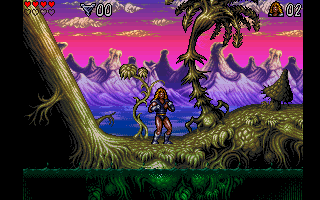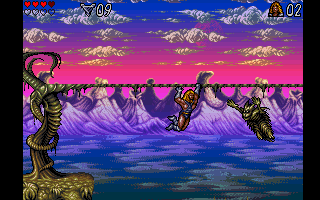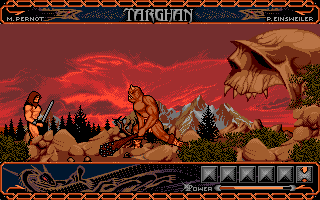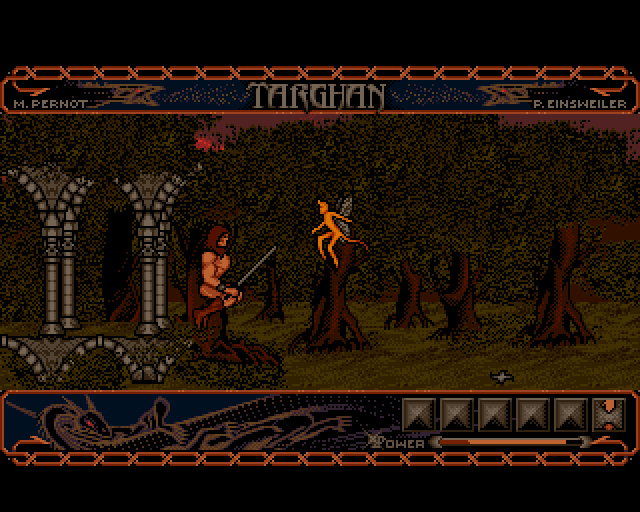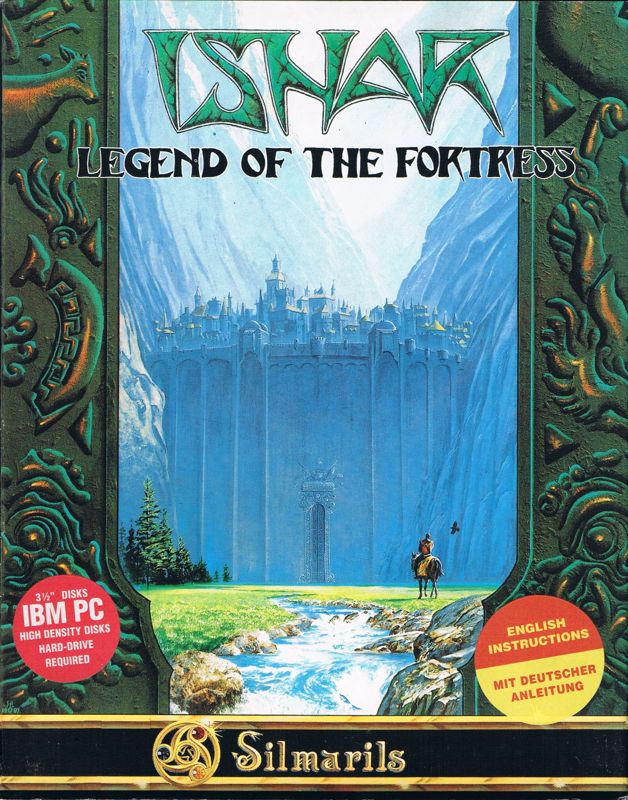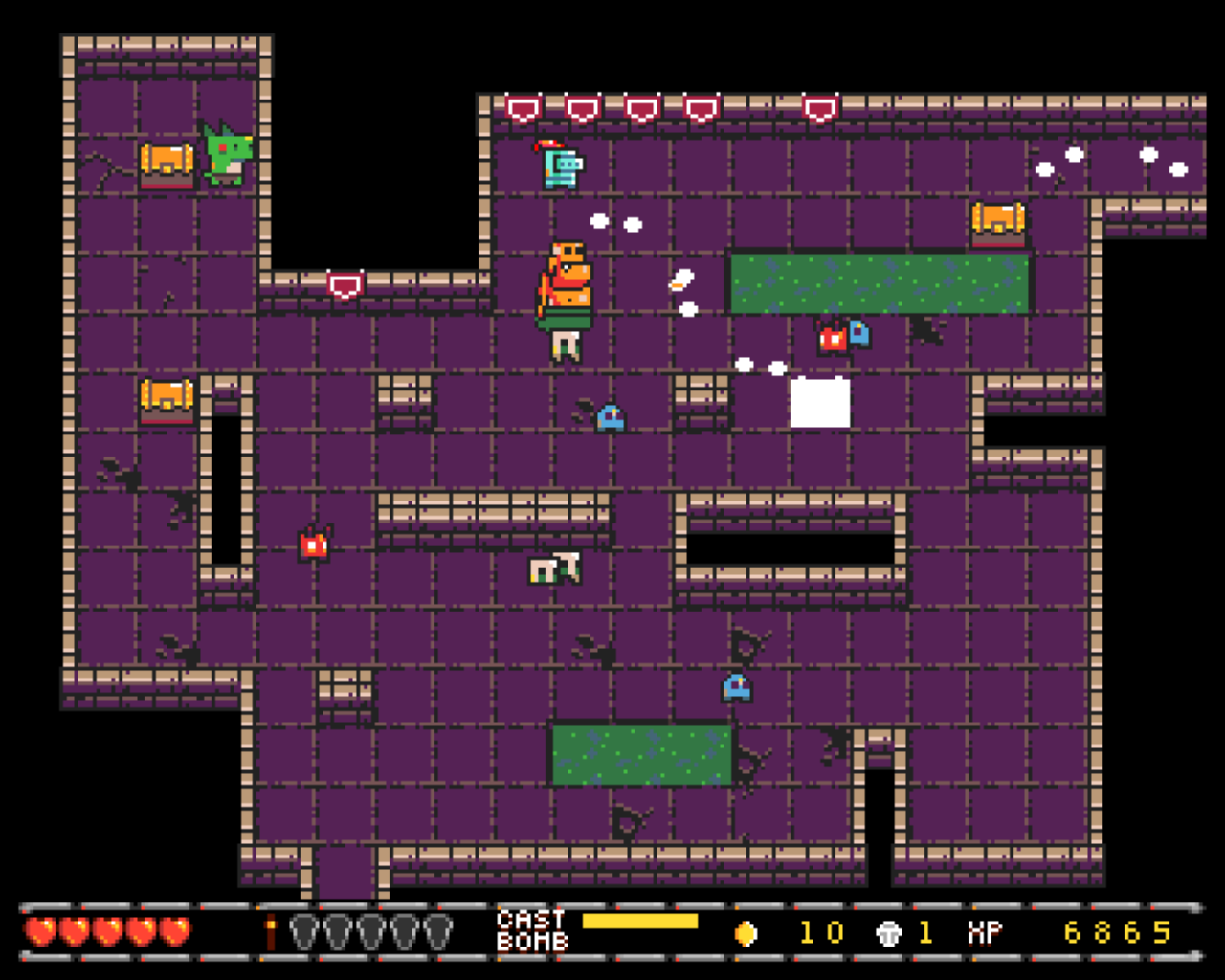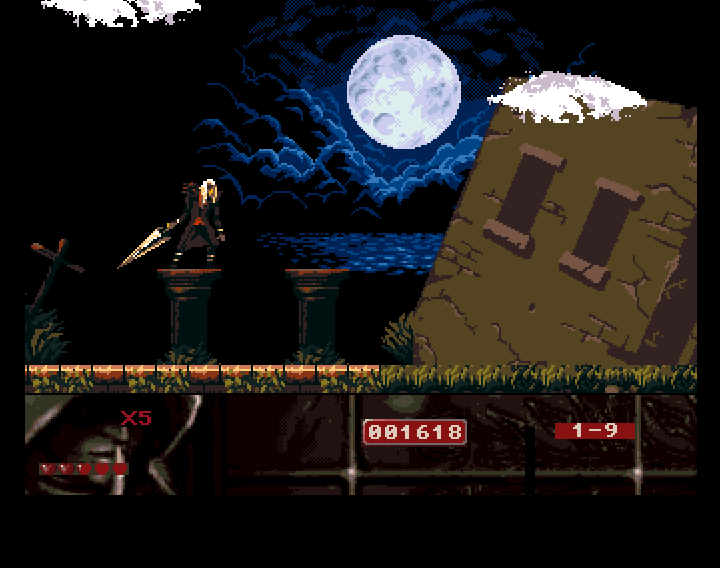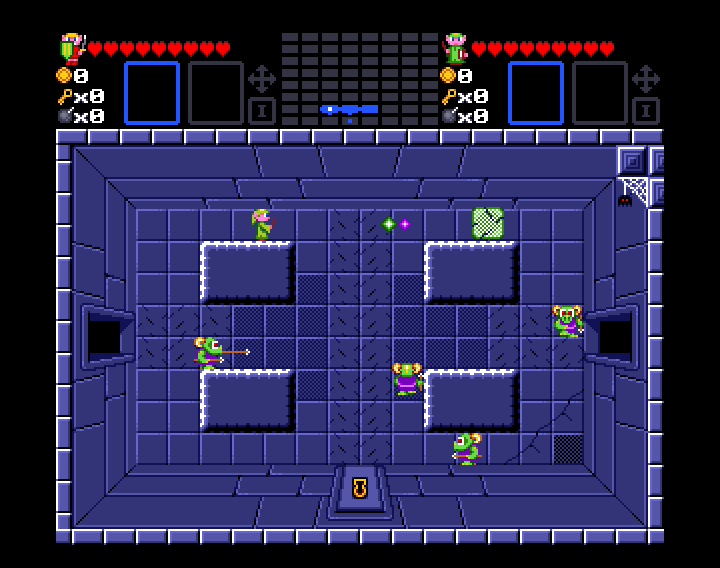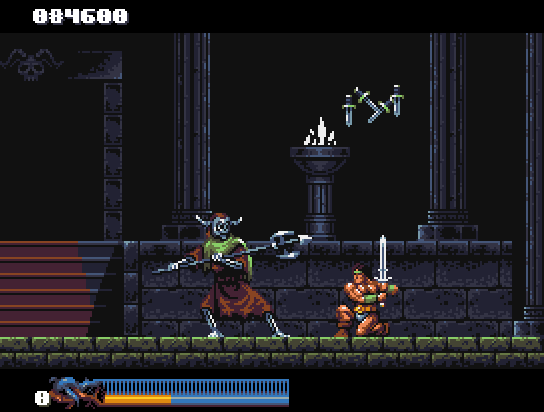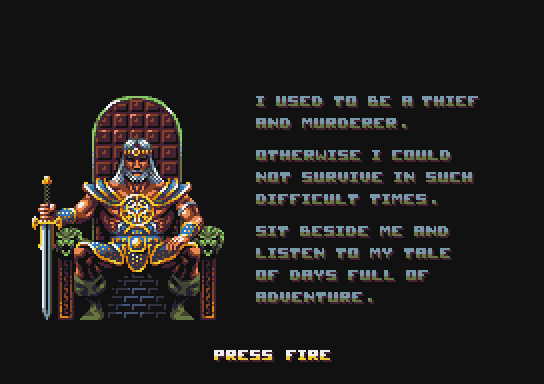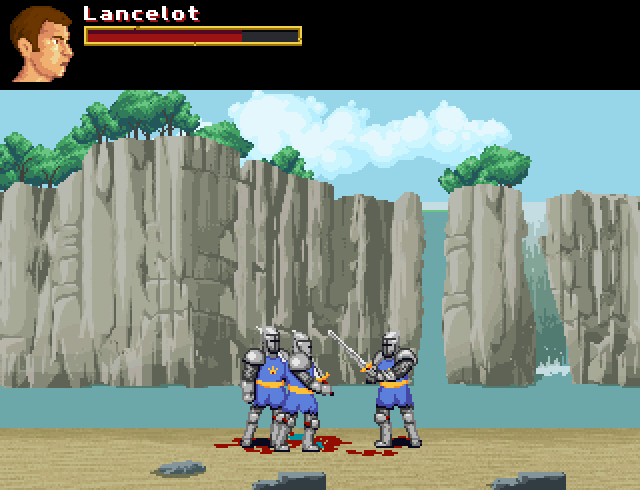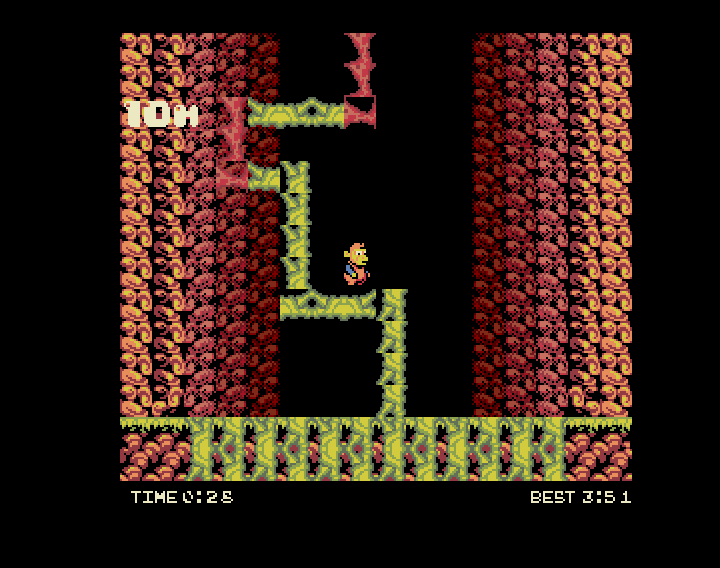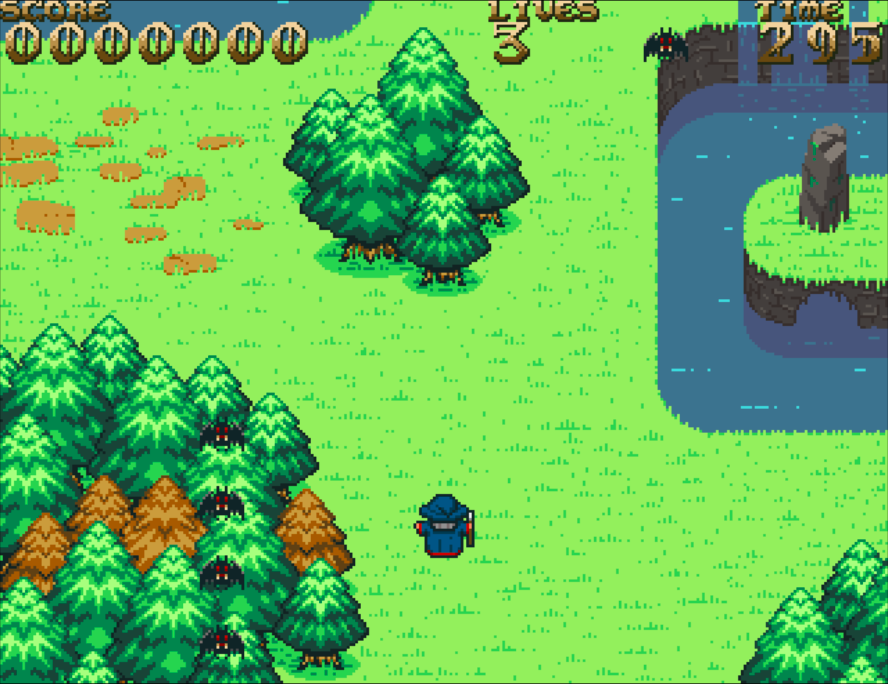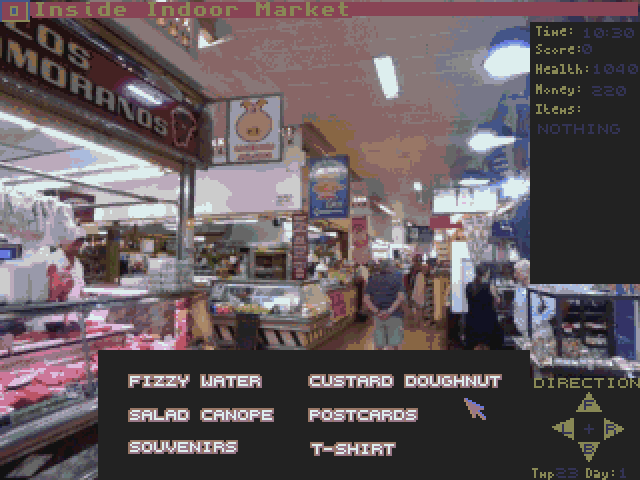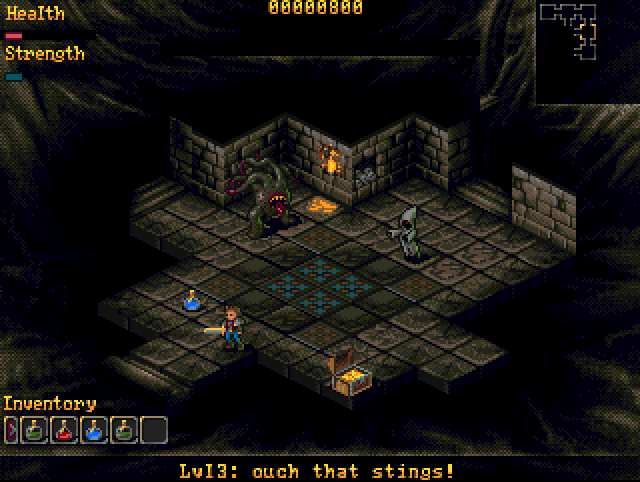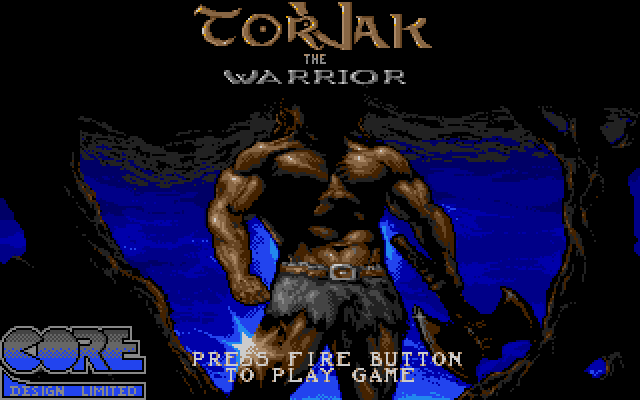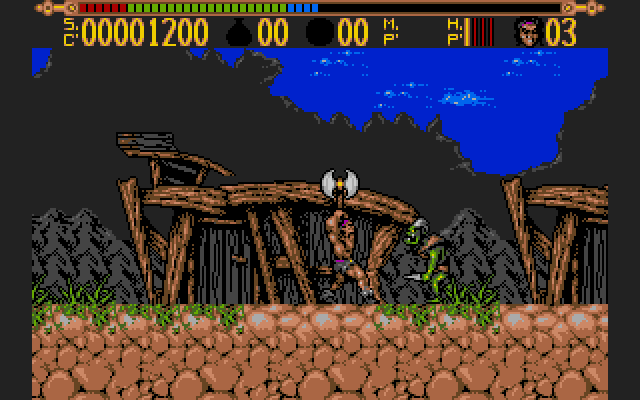Lionheart for the Amiga might be described as being like Thundercats except not lame. The story of the game is that Valdyn, a half-man/half-cat swordsman nicknamed Lionheart, is sent on a quest to retrieve the Cat People's priceless Lionheart jewel, which has been stolen by the evil wizard Norka. As an extra incentive, Valdyn's woman was turned to stone by Norka, so he needs to find a cure for her, too. Shortly after beginning his quest on the back of a flying dragon, however, Valydn is shot down by Norka's airship and crash lands in a forest far from his objective, so now he has to fight all the way across the land, through forests, swamps, volcanic lands, and the city and fortress.
Sunday, April 21, 2024
Lionheart (1993)
Lionheart for the Amiga might be described as being like Thundercats except not lame. The story of the game is that Valdyn, a half-man/half-cat swordsman nicknamed Lionheart, is sent on a quest to retrieve the Cat People's priceless Lionheart jewel, which has been stolen by the evil wizard Norka. As an extra incentive, Valdyn's woman was turned to stone by Norka, so he needs to find a cure for her, too. Shortly after beginning his quest on the back of a flying dragon, however, Valydn is shot down by Norka's airship and crash lands in a forest far from his objective, so now he has to fight all the way across the land, through forests, swamps, volcanic lands, and the city and fortress.
Sunday, October 29, 2023
Targhan (1989)
Targhan was the creation of Silmarils, a French studio with a knack for visually striking games with lush pixel art. The game's manual includes some backstory about where the hero, Targhan, comes from, stating that he comes from a village called Edengarfin and that he had grown up to be a great chief of his tribe, but that he left because a legend of an "Evil One" with a great secret kept him restless. The game covers Targhan's quest to defeat this evil wizard.
Targhan has the classic sword-and-sorcery hero's uniform: a great, chiseled physique; a long, thick mane of hair; short trunks with a belt; boots; metal wrist bands; a sword; and that's it. He can pick up a maximum of five sub-items like shurikens to use for distance attacks, healing potions, and necessary quest items like keys. He wanders through verdant European forests with deer trotting through the background, to crumbling ruins, to imposing castles. Most of the enemies are humanoids, sometimes rat-headed men and sometimes just men in scary-looking armor. Somewhat at odds with the S&S vibe is that you'll sometimes come up against elf woman archers and in one section you apparently invade a village of dwarves nestled among treetops, killing every guard that gets in your way. It seems the elves and dwarves are as bad as everyone else in this land.
Targhan resembles sideways hack-and-slash games like Rastan but in motion it's quite different. The animation is a bit stiff and the controls seem perhaps influenced by Barbarian's style of holding the fire button while moving the joystick to perform combat moves. When Targhan goes into combat against a humanoid opponent, the fighting is definitely more Barbarian-style, with the opponents hammering at each other until one falls, so it's important to master the timing needed to connect with your swings and hit the enemy before he hits you. Perhaps the creators envisioned a system of thrilling swordfights with impressive attacks and counterattacks, but in practice the most effective technique is generally to just hold the button down and never stop swinging straight ahead. The enemy will try to close in get hit, bounce back, and repeat until dead. For flying enemies like bats, just wait until they descend to attack and then nail them with one swing.
Assuming one gets sufficiently comfortable with the fighting and jumping, the game really becomes a puzzle/adventure game, about knowing which way to go first and which objects to gain to unlock deeper parts of the game. Occasionally Targhan will find scrolls with bits of text that provide hints, but also you just have to work it out through trial and error. For instance, one of the first things necessary is to explore an underground cave system, but obviously you can't see in the dark. The solution is to go back to the surface and wander until you see a small yellow pixie-like creature approaching you. Instead of killing it (which is possible), allow the creature to approach, where it becomes apparent that it's friendly and it begins to follow you. When you return to the caves, it transforms into a floating light source that allows you to navigate the caves without any issue. Like classic adventure games like King's Quest, it's probably helpful to try to map the game out and figure out where all important objects are and the most efficient path to collecting and using them. Then you just have to survive all the fights and vanquish the wizard to get an anticlimactic ending.
Targhan's no hidden gem but it's not a bad game to play as long as one is patient and willing to put up with its shortcomings for the sake of exploring its little fantasy world for a while. Although it didn't spawn any direct sequels, it wasn't the end of Targhan as a video game hero as Silmarils brought him back a couple of years later as a recruitable companion in its RPG, Ishar: Legend of the Fortress. He's classed as a barbarian in that game and is a tough fighter.
Tuesday, August 8, 2023
AmiGameJam 2022
This year's Amiga Game Jam happens to have had the theme of sword and sorcery. There were nine submissions made between October 31 and July 31, and voting is still underway for the next 11 days. Seems like a good idea to have a brief look at the entries (note that most are more like demos or even "proof of concept" than fully completed games).
It plays a bit like a fantasy version of Robotron and as Rogue-lite games go the difficulty curve seems relatively gentle. It's pretty generic fantasy - people often have differing ideas of what "sword and sorcery" means, as we'll see in some of the other entries - but it's fun, easy to get into, and the dungeons are just short enough to make it easy to play just one more.
******
Gothicvania, by Amiten Games, is clearly inspired by Castlevania. Infernal creatures are menacing the town of Valencia and it's up to warrior-sorcerer Sir Lucas to use his magical, fire-spewing sword to defeat them.
This could be a pretty good Castlevania clone if it's completed and such a game would be welcome on the Amiga since the official Castlevania port currently has a 2.98 turd rating on LemonAmiga. As it stands right now, Gothicvania is pretty rough around the edges, with awkward animation and collision detection. Hopefully the creators will continue working on it and fleshing it out.
******
The Last Dungeon, by PixelPlop, is a Zelda clone, specifically the dungeons that you play in the original NES Zelda. Unlike Zelda, you get a choice of protagonists, a barbarian or a wizard (literally sword and sorcery), and it's got a slightly grittier feel than Zelda, with details like bloody pentagrams on the floors and grislier enemies.
As an an attempt at recreating that Zelda feel, it works quite well and really just needs a bit of polishing at this point.
******
Rastan, by basementApe, is exactly what it seems to be: porting the original arcade game to the Amiga 500 as closely as possible. Rastan was ported to numerous systems but the Amiga never got it for some reason, but this version is gathering a lot of interest because it looks and sounds fantastic. It's not an exact translation - aspects of the arcade like the swinging vines have been replaced by moving platforms and the controls haven't been fully implemented - but if things keep up this could end up being the best home version of the game, exceeding even the Apple IIgs version.
******
King Arthur: Rise of the Round Table, by Latebit, is a beat-'em-up in which you control Sir Lancelot as he battles a gang of enemy knights. It doesn't last long (defeating all the knights seems to just restart the demo) but there's some quality pixel art, the combat is easy to pick up (high, middle, and low attacks) and the overall look and gory style recall the classic Moonstone. There's some real potential if they stick with it and expand it into a full game.
******
Jack in the Pit, by earok, involves you being knocked from a cloud into a deep pit, so you have to grow a beanstalk all the way back up while various elements try to rip it down from underneath you. The game was apparently created in only 48 hours but it's an impressive piece of work that looks and plays better than many games that have more protracted development times. It's not entirely clear how it fits the theme aside from being broadly fantasy, but at least it's fun.
******
Caravandalf, by Peter and Gordon Mackay, is a caravan shooter (trying to get as high a score as possible within a time limit) in which you control a wizard (Gandalf the Grey?) as he soars through the air blasting enemies. It could definitely use some music, but it's a fast-paced bit of fun for what it is.
******
Holiday, by lifeschool22, is a "photo RPG" that tasks you with surviving a vacation to Spain in 2018. You have to find items like sunscreen to help you survive the oppressive heat. What does this have to do with sword and sorcery? *shrug* Game jams!
******
Roguecraft, by Badgerpunch Games, is an Amiga expansion of Rogue 64, a Rogue-like C64 game the creators did a couple of years ago. It's the usual Rogue-like game in that you explore a randomized dungeon, most likely getting killed repeatedly as you learn how the game works and what potions do, but this one has a lot of style.
Not counting Rastan, which at least has the advantage of a classic arcade game providing a blueprint, this is the most impressive overall submission. The impressive graphics are reminiscent of HeroQuest and it generally seems like a fully finished game. It will be interesting to see how the judging goes, but the best of the lot would seem to be between this and Rastan.
Tuesday, May 2, 2023
Friday, November 11, 2022
Doman: Grzechy Ardana (1995)
Doman: Grzechy Ardana (Doman: Sins of Ardan) is something of a Golden Axe clone based on a Polish sword-and-sorcery comic drawn by Andrzej Nowakowski.
The player controls one of two characters, Doman himself or his sidekick Baurus, that I assume are the heroes of the comic (it's hard to find information about Doman in English...) and you simply walk down a path slaying everyone dumb enough to get in your way.
The moves are heavily inspired, if not outright swiped from the classic Barbarian, and the controls are similar in how you hold the fire button and then push a direction to perform a specific move. Holding the button and pulling away from an enemy will execute the famous twirling decapitation attack from Barbarian, for instance, and it will decapitate the enemy if their health bar is low enough.
The game was created by World Software, which caused a brief mid-90s stir in Eastern Europe through games that were crudely made but hilariously over the top in their gore and general subject matter. The year before releasing Doman, they made a beat-'em-up called Franko: The Crazy Revenge!, which involved a couple of heroes cleaning up the streets by splattering the blood of street punks all over the place. Not a particularly well-made game, but memorable and funny in a time when simply being edgy and gross was enough to ensure a certain amount of attention. Doman is a bit more advanced than Franko, but only just so. The graphics are little more refined and the controls are a bit easier to use, although it's still very difficult and, like Franko, the levels do go on for a bit. There are some between-level cutscenes and you get the occasional image of Doman reclining on a throne just like Conan did in the movie. The game could have used something like at least one layer of parallax scrolling, but you get the sense that these guys were just having fun cranking out games they wanted to see and were lucky enough to get paid for doing so.
Wednesday, October 19, 2022
COVER ART: Myth: History in the Making (1992)
That's Les Edwards's art for Poul Anderson's Conan the Rebel (British Sphere edition). The original version of Myth featured a hero who was supposed to be a modern high school kid, but for the Amiga version they went with a jacked up warrior type.
Monday, August 29, 2022
Torvak the Warrior (1990)
Torvak the Warrior is a relatively early game from Core Design, which of course would go on to fame for creating the Tomb Raider series. Torvak is yet another poor barbarian warrior who comes home from the war to find the whole place burned down and all villagers slain by the forces of a necromancer. With no rest for the weary, Torvak picks up his axe and heads off to make the sumbitches pay.
This takes the form of a side-scrolling hack-and-slash game in which Torvak has to generally go from left to right over five levels, but those levels can get a bit mazelike and feature long vertical shafts and hidden secrets that offer extra points and power-up items. Torvak will face human berserkers, green-skinned orcs, rat-men, oozing swamp creatures, and rock-men, among several others.
Torvak begins with his axe but he can pick up a broadsword, a warhammer (leave this one alone, it's terrible), or a ball-and-chain. He can find shields for protection, and he can find potions that allow him to unleash a limited number of magical attacks, handy for facing level bosses.
The game superficially resembles stuff like Rastan, but it's a slow, plodding experience. Torvak, with his top-heavy upper body and relatively stumpy legs, moseys along his way, stops moving while attacking, and since bigger enemies often take multiple hits to kill, he frequently has to take a shot, then leap backwards to create enough space for a second attack. Although he has an explosive jumping ability, he's definitely more akin to Arnold's lumbering portrayal of Conan than Robert E. Howard's quick, pantherish original.
Torvak the Warrior seems to have been initially designed for the Atari ST, then ported to the Amiga, a phrase that probably triggers old Amiga fans' PTSD. The Amiga version got a modest upgrade to Matt Furniss's soundtrack, but nothing else. The relatively limited colors and lack of parallax scrolling betray the game's ST origins, and even the improved soundtrack comes at the cost of forcing the player to choose between music or sound effects, but not both simultaneously, a common issue with Commodore machines because of their limited audio channels.
To its credit, though, the game plays fairly, controls well, and it looks okay even if it's not a technical marvel. Core had some good artists (Lee Pullen and Terry Lloyd in this case), so their games often had a clean, attractive look and distinctive characters. The levels have the standard swamp/mountains/jungle themes, but there are evocative background details like giant skulls and rotting carcasses of huge creatures littering the ground.
Torvak the Barbarian is better than many games, but there are also many games better than it.
Supplemental reading: Legend, by David Gemmell
Tuesday, April 5, 2022
COVER ART: Blade Warrior (1991)
Cover by Simon Bisley, best known as a comics artist but he's done a few game covers. He's never made a secret of Frazetta's influence on him.
SKALD: Against the Black Priory (2024)
SKALD: Against the Black Priory is a Kickstarted RPG by Anders Laurindsen that hearkens back to classic PC RPGs, particularly those for t...

-
Cover by Simon Bisley, best known as a comics artist but he's done a few game covers. He's never made a secret of Frazetta's inf...
-
Dishonored, released by Arkane Studios, probably isn't most people's idea of a traditional sword-and-sorcery work. The player cont...
-
SKALD: Against the Black Priory is a Kickstarted RPG by Anders Laurindsen that hearkens back to classic PC RPGs, particularly those for t...

